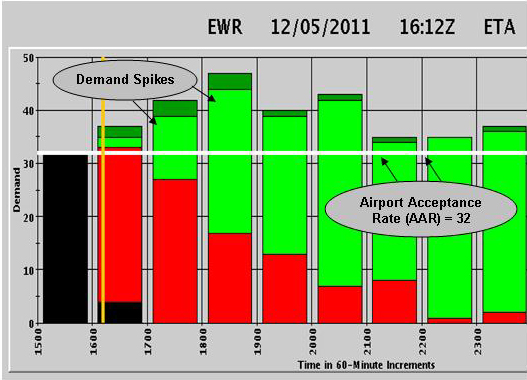Atc Slot Definition
We would like to show you a description here but the site won’t allow us. Air traffic flow management (ATFM) is the regulation of air traffic in order to avoid exceeding airport or air traffic control capacity in handling traffic (hence the alternative name of Air Traffic Flow and Capacity Management - ATFCM), and to ensure that available capacity is used efficiently. ATC is a poker abbreviation that stands for “Any Two Cards.” ATC means just what it sounds like – that, in the situation at hand, a player could be making a play with any two cards in the deck.
- Atc Slot Definition Synonym
- Atc Slot Definition Meaning
- Atc Slot Definition Dictionary
- Atc Slot Definition Synonyms
The Advanced Transportation Controller (ATC) Standards are intended to provide an open architecture hardware and software platform that can support a wide variety of Intelligent Transportation Systems (ITS) applications including traffic management, safety, security and other applications. The ATC Standards are being developed and maintained under the direction of the ATC Joint Committee (JC) which is made up of representatives from the American Association of State Highway and Transportation Officials (AASHTO), the Institute of Transportation Engineers (ITE), and the National Electrical Manufacturers Association (NEMA).
The Advanced Transportation Controller Standard (ATC Standard) is one of the four standards of the ATC family of standards. The ATC Standard provides a powerful, on-street, computing platform for numerous ITS applications intersection control, ramp metering, data collection, safety, security and other applications. It uses a transportation controller architecture where the computational components of the controller reside on a single small printed circuit board (PCB), called the “Engine Board,” with standardized connectors and pinout. It is made up of a central processing unit (CPU), Linux operating system (O/S), memory, external and internal interfaces, and other associated hardware necessary to create an embedded transportation computing platform. The Engine Board plugs into a “Host Module” which supplies power and physical connection to the input/output (I/O) facilities of the controller. While the interface to the Engine Board is completely specified, the Host Module may be of various shapes and sizes to accommodate innumerable transportation controller designs and cabinet architectures. The ATC Standard works together with the Application Programming Interface (API) Standard to allow application programs to share the resources of the controller and the transportation field cabinet system.
ATC 5201 Standard v06 represents a significantly improved and clarified document over ATC Standard 5.2b. There were 303 comments submitted and adjudicated by the Controller WG in the development of ATC 5201 Standard v06. This provided valuable feedback in identifying areas of ATC Standard 5.2b that needed correction, further definition or enhancement. Specific areas where the standard was enhanced are as follows:

- Additional front matter and context material was added to help users of the standard;
- Provisions were made for optional Secure Digital (SD) card and controller area network (CAN) bus interfaces;
- CoreMark benchmarks are now used as a measure of central processing unit (CPU) performance;
- User interface elements and their physical locations on ATC units have been clarified;
- Synchronous serial port features that have been unused by the industry are now optional;
- Both Model 2070-like communications expansion slots are now optional; and
- Memory sections of the standard were clarified and rewritten to not be overly restrictive on the types of memory technology used.
Other standards within the ATC program include the Model 2070 Standard, the ATC API, and the Intelligent Transportation Systems (ITS) Cabinet Standard.
ATC 5201 Standard v06A Maintenance Update
ATC 5201 Standard v06.25 was published as a Jointly Approved standard of the ATC JC on January 12, 2018. It was completed approximately a year prior but was delayed due to an appeal that was later rescinded. During the process of the appeal, a maintenance effort was started that would become ATC 5201 v06A.35. Comments were solicited from the Controller Working Group (WG), a technical subcommittee of the ATC JC. Its membership is made up of members from state and local transportation agencies, manufacturers, software developers and consultants. There were 57 comments submitted. Of those 57, 54 comments were adjudicated and closed. There were 3 comments that remained on the list that could not be closed due to the scope of the effort at the time. Later during the development, User Comment Draft (UCD) ATC 5201 Advanced Transportation Controller Standard Version 06.32 (ATC 5201 v06.32) was produced and distributed to the SDOs. Based on this UCD, 29 comments were submitted (included the three previous unresolved comments) and adjudicated by the Controller WG. Both sets of comments provided valuable feedback in identifying areas of ATC Standard 5201 06.25 that needed correction, further definition or enhancement.
The improvements to the standard are mainly corrections and additions focused on removing ambiguities and barriers to software portability and hardware compatibility. There are also increases to memory sizes and to the minimum Linux kernel version to be more contemporary. ATC 5201 v06A.35 represents an improved and clarified document over ATC 5201 v06.25.
The Controller WG submitted ATC 5201 Standard v06A.35 to the ATC JC for review as a Proposed Recommend Standard (pRS). The ATC JC accepted the document as a Recommended Standard during their teleconference on June 20, 2019 with a vote of 8 yeas, 0 nays, and 0 abstentions.
| SDO Process Step | Status | Start | End |
Notice of Intent to Adopt ATC 5201 Standard v06A
| Completed | 01/17/20 | 02/21/20 |
User Comment Draft (UCD)
| Complete | 07/18/18 |
Atc Slot Definition Synonym
Tracking ATC 5201 v06 by the SDO Process
(For complete details on the steps of the Standards Development Process please click here.)
SDO Process Step | Start Date | ||
13 | Jointly Approved Standard
| Complete | 01/12/18 |
Notice of Intent to Adopt
| Complete | 10/03/15 | 12/04/17 |
Recommended Standard
| Complete | 08/28/15 | 10/03/15 |
Comments Report
| Complete | 09/24/12 | 08/28/15 |
6-7 | Solicit Comments on UCD
| 07/30/12 | |
5 | User Comment Draft (UCD)
| 03/30/12 | |
4 | Working Group Drafts (WGDs)
| 2010 |
Air traffic flow management (ATFM) is the regulation of air traffic in order to avoid exceeding airport or air traffic control capacity in handling traffic (hence the alternative name of Air Traffic Flow and Capacity Management - ATFCM), and to ensure that available capacity is used efficiently.[1]
Airport capacity[edit]
Because only one aircraft can land or depart from a runway at a given time, and because aircraft must be separated by a certain distance or time to avoid collisions, every airport has a finite capacity; it can safely handle only so many aircraft per hour. This capacity depends on many factors, such as the number of runways available, layout of taxi tracks, availability of air traffic control, and current or anticipated weather.[2] The weather can cause large variations in capacity; strong winds may limit the number of runways available, and poor visibility may necessitate increases in separation between aircraft.[3]
Atc Slot Definition Meaning
When an air traffic control unit that will control a flight reaches capacity, arriving aircraft are directed towards holding patterns where they circle until it is their turn to land. However, aircraft flying in circles is an inefficient and costly way of delaying aircraft, so it is preferable to keep them on the ground at their place of departure, called a ground delay program.[1] This way, the delay can be waited out on the ground with engines off, saving considerable amounts of fuel. The careful calculation of en route time for each flight and traffic flow as a whole, which aims to minimize overall delays in the air traffic system, is highly dependent on computers.
Operation in Europe[edit]
All IFRflight plans are tracked by the Central Flow Management Unit (CFMU). Every airport and air traffic control sector has a published maximum capacity. When capacity is exceeded, measures are taken to reduce the traffic. This is termed regulation. The aim is to use capacity effectively, keeping the average delay as low as possible, while ensuring capacity is not exceeded.[4]
For example, if two flights are scheduled to arrive at an airport at exactly the same time, and the airport can handle one aircraft every five minutes, the aircraft may be assigned delays to ensure that the second aircraft arrives five minutes after the first. Similarly, the first aircraft will be required to depart on schedule and not allowed to depart late. This way, the second aircraft will not need to enter a holding pattern before landing.
Atc Slot Definition Dictionary
See also[edit]
- Bay of Bengal Cooperative Air Traffic Flow Management System (BOBCAT)
References[edit]

- ^ abTraffic Flow Management in the National Airspace System(PDF) (Report). Federal Aviation Administration. October 2009. Retrieved 20 November 2016.
- ^AC 150/5060-5 - Airport Capacity And Delay (Report). Federal Aviation Administration. 23 September 1983. Retrieved 20 November 2016.
- ^Klein, Alexander; Kavoussi, Sadegh; Lee, Robert (2009). Weather Forecast Accuracy: Study of Impact on Airport Capacity and Estimation of Avoidable Costs(PDF). Eighth USA/Europe Air Traffic Management Research and Development Seminar. Retrieved 20 November 2016.
- ^'CFMU Objectives'. Archived from the original on 17 November 2008. Retrieved 22 May 2008.